#Michelle Hermann
Explore tagged Tumblr posts
Text

Michele Petrelli, "Turquoise"
"Those who do not fit into the world are always close to finding themselves." ― Hermann Hesse
29 notes
·
View notes
Text
" In fondo, il nostro problema intellettuale è che noi amiamo l’America. Gli Stati Uniti sono stati uno di quei paesi che hanno sconfitto il nazismo, ci hanno mostrato la strada da seguire per la prosperità e la distensione. Se vogliamo accettare pienamente l’idea che oggi stiano tracciando la strada che porta alla povertà e all’atomizzazione sociale, è indispensabile ricorrere al concetto di nichilismo. Quanto alle ragioni tecniche, un’altra cosa che mi spinge a utilizzare questo concetto è la constatazione che i valori e il comportamento della società americana sono oggi profondamente negativi. Come per il nichilismo tedesco […], questa negatività è il prodotto di una decomposizione del protestantesimo, solo che non si verifica allo stesso stadio.
Il nazismo apparve nella sua prima fase dopo che, tra il 1880 e il 1930, il protestantesimo ebbe cessato di essere una religione attiva. Il nazismo corrisponde a un’esplosione di disperazione durante la sua fase zombi, a un’epoca in cui i valori protestanti, positivi e negativi, continuavano a persistere nonostante il venir meno della pratica religiosa. La fase zombi del protestantesimo americano è stata complessivamente positiva. In linea di massima va dalla presidenza di Roosevelt a quella di Eisenhower, e ha visto la nascita dello Stato sociale, delle università che assicurano un insegnamento esteso a tutti e di qualità e il diffondersi di una cultura ottimistica che ha conquistato il mondo. Questa America aveva recuperato i valori positivi del protestantesimo (alto livello di istruzione, egalitarismo tra i bianchi) e stava cercando di liberarsi dei suoi valori negativi (razzismo, puritanesimo). La crisi attuale corrisponde, viceversa, all’approdo allo stadio zero del protestantesimo. Ciò ci consente di comprendere al contempo sia il fenomeno Trump che la politica estera di Biden, tanto il deterioramento interno quanto la megalomania esterna, come pure le violenze che il sistema americano esercita sui propri cittadini e su quelli degli altri paesi. La dinamica tedesca degli anni Trenta e la dinamica americana attuale hanno in comune il fatto di essere animate dal vuoto. In entrambi i casi, la vita politica funziona senza valori, non essendo che un movimento tendente alla violenza. Rauschning definiva il nazismo non diversamente da ciò. Prima di abbandonarlo, fu membro del Partito Nazionalsocialista Tedesco dei Lavoratori (NSDAP): questo conservatore, per così dire “normale”, non poteva tollerare la violenza gratuita. Nell’America di oggi vedo un pericoloso vuoto di pensiero e di idee, condito dall’ossessione per il denaro e il potere, i quali non possono essere in sé dei fini, dei valori. Questo vuoto conduce all’autodistruzione, al militarismo, a una negatività endemica: in sostanza, al nichilismo. "
Emmanuel Todd, La sconfitta dell'Occidente, traduzione di Alessandro Ciappa e Michele Zurlo, Fazi Editore, 2024.
[Edizione originale: La Défaite de l'Occident, Paris, Gallimard, janvier 2024]
#Emmanuel Todd#La sconfitta dell'Occidente#Alessandro Ciappa#Michele Zurlo#Storia contemporanea#Stati Uniti d'America#Donald Trump#Joe Biden#politica americana#geopolitica#relazioni internazionali#letture#leggere#libri#nichilismo#progresso#sviluppo#democrazia#libertà#civiltà occidentale#Hermann Rauschning#protestantesimo#intellettuali europei#Franklin Delano Roosevelt#Stato sociale#welfare state#warfare#razzismo#puritanesimo#saggi
17 notes
·
View notes
Text
...çok geç, hep çok geç, gölgeler, yansımalar, çatlaklar, savuşmalar, gülümsemeler, yorgunluk ya da vazgeçiş.
perec - uyuyan adam
#kitap#edebiyat#blogger#felsefe#kitaplar#blog#kitap kurdu#charles bukowski#georges perec#uyuyan adam#kayboluş#michel foucault#jean paul sartre#bulantı#franz kafka#albert camus#john berger#friedrich nietzsche#böyle buyurdu zerdüşt#selçuk baran#bir solgun adam#oğuz atay#tehlikeli oyunlar#turgut uyar#turgut özben#selim ışık#selim ileri#roland barthes#yas günlüğü#hermann hesse
18 notes
·
View notes
Text


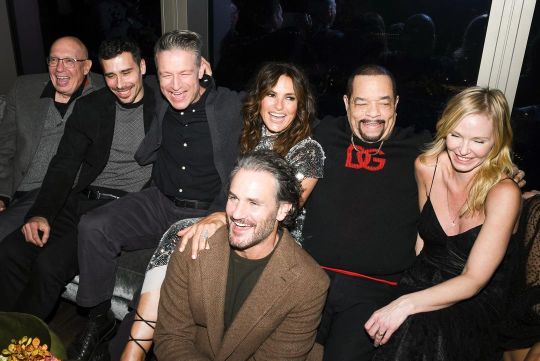

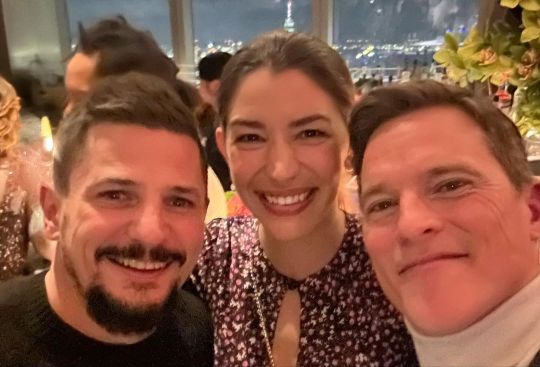



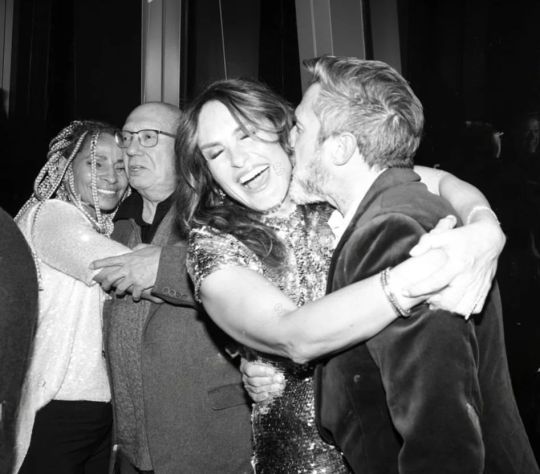
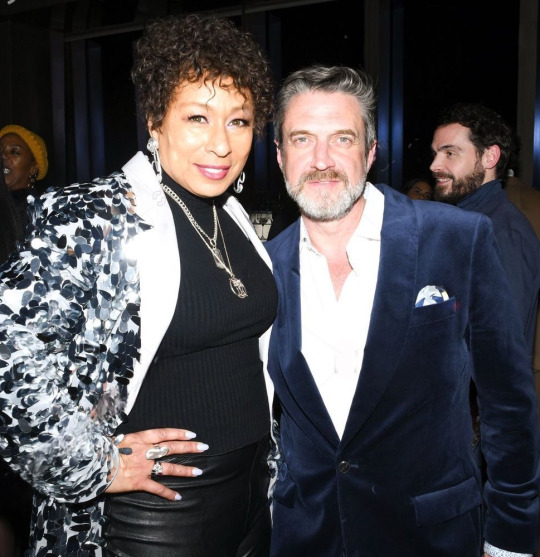
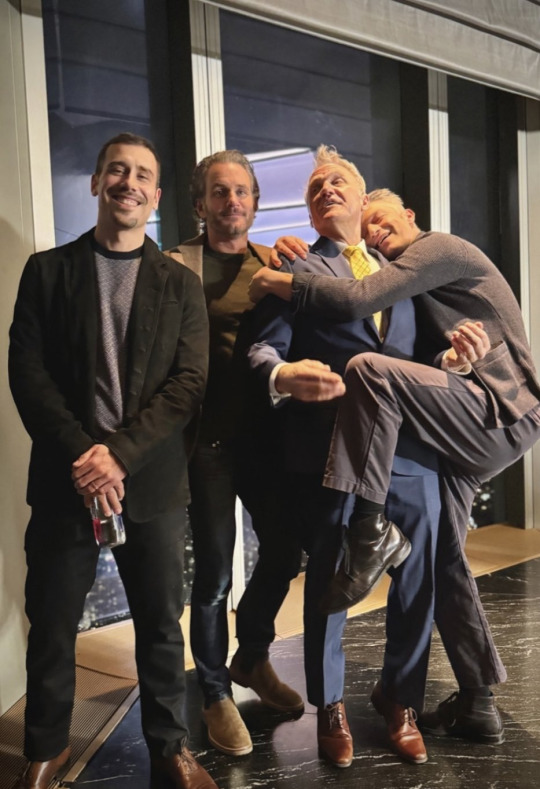
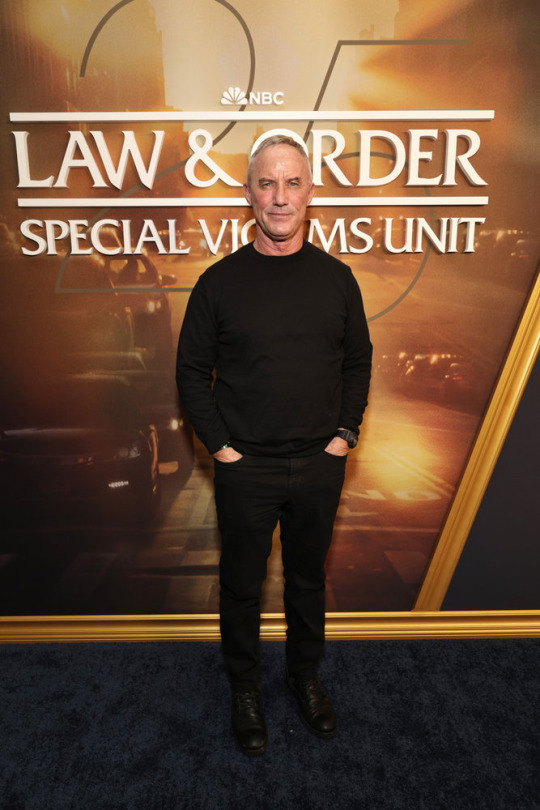
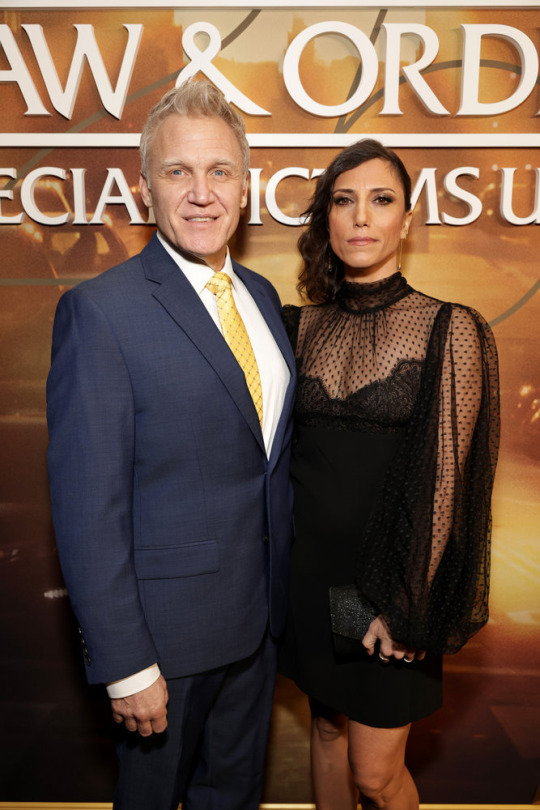

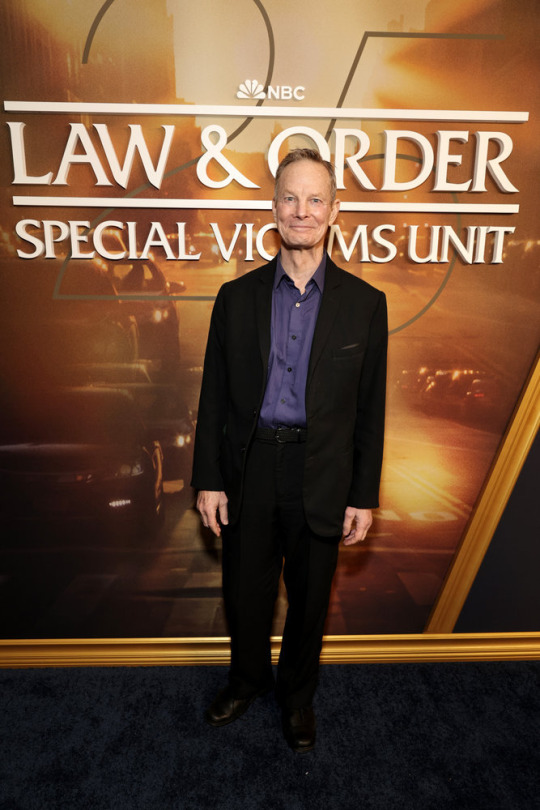

25th Anniversary / 25th Reunion Party
#svu#svu25#mariska hargitay#dann florek#peter scanavino#ice t#michelle hurd#mike doyle#tamara tunie#jamie gray hyder#raul esparza#joel de la fuente#peter hermann#delaney williams#kelli giddish#kevin kane#octavio pisano#dick wolf#ari'el stachel#michael trotter#stephanie march#chris meloni#christopher meloni#terry serpico#kadia sarif#robert john burke#isabel gillies#bill irwin#svu 25th anniversary
29 notes
·
View notes
Text

The Berlin Jazz Workshop Orchestra - Sib Langis (1981)
#the berlin jazz workshop orchestra#fmp#birgit esslinger#thomas wegel#stefan thimm#albrecht riermeier#bernhard arndt#otto jansen#friedemann graef#michel mast#thomas wiedermann#bernhard mergner#hermann süß#loading
0 notes
Text
The women of Iran are dancing. Women blinded, with one eye, or one arm, are dancing. Iranian Kurds are dancing. Across Europe, Iranian dissidents are dancing. Iranians – often, relatives of the regime’s victims – are drinking to show their joy. The daughters of Minoo Majidi, a mother shot dead by security services during the 2022 protests, shared a video of them raising a glass to President Raisi’s death.
Dark humour – the jokes of an oppressed people – are circulating. “Mr Raisi, you surprised us. We have no tapas for our drinks,” chuckles one Iranian in a celebratory video on social media. There was the gag about how a Mossad agent called “Eli Copter” had caused the crash. People have handed out cakes and sweets in public squares – an act of symbolic importance in Persian culture, often associated with joyous events. Celebratory fireworks filled the skies in Iranian cities.
Such courage is all the more impressive given how little Raisi’s death is likely to change anything in this closed prison of a society. It may somewhat alter the succession, since he had been one of the men tipped to succeed Khamenei, but the Ayatollahs retain their stranglehold. The bravery of anyone involved in any celebration or act of civil disobedience such as removing a headscarf, is astounding. Those letting off fireworks or handing out sweets are risking their lives.
History will remember Raisi as a squalid tyrant who took a twisted pride in human suffering. He was involved in the torture and extrajudicial murder of thousands of political prisoners held in Iranian jails and the mass killings of opponents in 1988, when as many as 30,000 are believed to have lost their lives. As Mariam Memarsadeghi wrote in a chilling article for Tablet magazine, “virgins were systematically raped before their execution, to circumvent the Islamic prohibition on killing virgins and to prevent women and girls from reaching heaven”.
And yet, the BBC posted about “President Ebrahim Raisi’s mixed legacy in Iran”. You can imagine the 1945 headlines about the mixed legacy of “motorway-builder, vegetarian rights enthusiast and dog-lover” Adolf Hitler, or that of “inspirational plus-size influencer” Hermann Goering. Reuters described how Raisi “rose through Iran’s theocracy from hardline prosecutor to uncompromising president, as he burnished his credentials to position himself to become the next supreme leader”.
Reading such things you would think Raisi was, at worst, a slight renegade. A cheeky chappie in a kaftan whose loss will be felt by light entertainment for generations. They tweeted like he was Rod Hull – rather than, you know, someone nicknamed “the Butcher of Tehran”. But in the real world, faced with the real consequences of the regime he ran, people are dancing.
It wasn’t just the BBC in its classic “tightrope walk” mode, either. Things were getting a bit Candle in the Wind at the UN, as the entire Security Council (including both the UK and US representatives) stood to observe a minute of silence for President Raisi. Goodbye Tehran’s rose.
European Council president Charles Michel tweeted out his sincere condolences, while the “European Commissioner for Crisis Management” committed the EU’s Copernicus satellite system to help locate Raisi’s helicopter, in the name of “#EUSolidarity”.
Lest we forget, Johan Floderus, a young EU official from Sweden, has been incarcerated at Iran’s notorious Evin prison for more than two years. We don’t see much “#EUSolidarity” coming from the other direction. Not to be undone, President Higgins of Ireland channelled the spirit of Eamon de Valera c.1945, by offering his “deepest sympathies” upon the death of a tyrant.
Such statements go well beyond basic diplomacy. Nobody asked anyone to gush; they chose to. The message it sends is a slap in the face to those bravely putting their lives on the line for freedom. But it’s par for the course in what is (sometimes optimistically) termed the “international community”.
Speaking of which, on Monday, the International Criminal Court put out joint bids for arrest warrants for the leaders of Hamas and the prime minister and defence minister of Israel. Given that the ICC has no jurisdiction, nor power of its own to arrest anyone, there was something bleakly comic about the manner of the announcement. Chief prosecutor Karim Khan delivered his statement flanked by a couple of glaring bureaucrats. The ICC appeared to be putting on its best “don’t mess with us” face. It looked like a geriatric version of Bugsy Malone.
The ICC application refers, pointedly, to the “territory of Israel” and the “state of Palestine”, which makes it clear which side its bread is buttered. It notably ignores Hamas’s use of human shields, surely a factor when assessing the civilian death toll. It even holds Israel entirely responsible for “closing the three border crossing points” after October 7.
Yet Hamas destroyed the Erez crossing, murdering its operators and blowing up the barriers separating it from the Gaza strip. Small wonder border checkpoints weren’t up and running immediately. Condemning Israel for this is grotesque; gaslighting on an international scale.
The timing is also telling. We have known about the crimes of October 7 from day one, thanks to the body-cams Hamas terrorists so proudly wore to document their butchery. Yet the ICC waited until May 2024 to condemn both Israel and Hamas on the same day. The effect is to suggest a moral equivalence between a democratic state and a genocidal terrorist group that says it wants to repeat the atrocities of October 7 indefinitely. You don’t have to believe Israel is above criticism – and nor should we – to recognise this.
Multinational organisations like the ICC are often held up as moral arbiters in themselves, when they will only be as virtuous or corrupt as their component member states, and reflecting the same biases. The World Health Organisation has long excluded Taiwan from its membership due to Chinese pressure. A ruinous decision, when Taiwan’s early warnings about the risks of human-to-human transmission of Covid in late 2019 were ignored. Something is rotten in the state of many international bodies and moral courage is in short supply.
Given such a clear-cut case of evil as Raisi, the mealy-mouthed global response does not bode well. For genuine bravery, we can look to the people at the sharp end of such regimes. Because still, in the midst of it all, the women of Iran dance.
86 notes
·
View notes
Text


The architecture of expressionism was one of Wolfgang Pehnt’s life themes: already in 1973 he published the first edition of his reference work „Die Architektur des Expressionismus“, a fundamental study of the origins and manifestations of expressionist tendencies in European architecture with an emphasis on the German developments. For a long time I had been searching for the last and significantly expanded edition from 1998, published by Hatje Cantz, and a while ago I finally found a copy in the right condition. In contrast to earlier editions the present one is larger in size and also includes a number of stunning color photographs that perfectly suit the colors of some of expressionism’s most significant buildings. Beyond this the strength of the book not only is Pehnt’s lucid writing but also his ability to tie together the different strands of expressionism. Pehnt leads the reader along the precursors Antoni Gaudí, the Prague Cubists and also the German Monumentalism of the turn of the century towards the German key expressionists Hans Poelzig, Bruno and Max Taut and the „Gläserne Kette“ architects. In individual chapters Pehnt introduces important members like the Brothers Luckhardt, Hans Scharoun or Hermann Finsterlin whose utopian architectural visions evidence the polyphony of expressionism.
The other end of the spectrum represents the Northern German Expressionism: while the metropolitan exponents around Bruno Taut and Walter Gropius dreamt up a messianic communism, protagonists like Fritz Höger and Bernhard Hötger indulged in Germanic mythology and the brick as representative of the German temper. So, it is not surprising that both later associated themselves with the Nazis.
In terms of European expressionism Pehnt primarily focuses on Amsterdam School and its exponents Michel de Klerk and Piet Kramer but also sheds light on the anthroposophical architecture by Rudolf Steiner in Switzerland. In so doing Pehnt shows the varied forms and ideas behind expressionist architecture and demonstrates that based on very different starting points at least partially congruent architectural expression was able to emerge. A fascinating and insightful read!
#expressionist architecture#brick expressionism#architecture book#architectural history#modern architecture#hatje cantz#vintage book#book
27 notes
·
View notes
Text
Opera on Youtube 4
L'Elisir d'Amore (The Elixir of Love)
Maggio Musicale Fiorentino, 1967 (Carlo Bergonzi, Renata Scotto; conducted by Gianandrea Gavazzeni; no subtitles)
Metropolitan Opera, 1981 (Luciano Pavarotti, Judith Blegen; conducted by Nicola Rescigno; Spanish subtitles) – Part I, Part II
Metropolitan Opera, 1991 (Luciano Pavarotti, Kathleen Battle; conducted by James Levine; English subtitles) – Part I, Part II
Vienna State Opera, 2005 (Rolando Villazón, Anna Netrebko; conducted by Alfred Eschwé; English subtitles)
Theatro da Paz, Brazil, 2013 (Atalla Ayan, Carmen Monarcha; conducted by Emiliano Patarra; Brazilian Portuguese subtitles)
Teatro Manoel, Malta, 2015 (Cliff Zammit Stevens, Shoushik Barsoumian; conducted by Philip Walsh; English subtitles)
Vienna State Opera, 2017 (Dmitry Korchak, Olga Peretyatko; conducted by Marco Armiliato; no subtitles) – Part I, Part II
Ópera de Bellas Artes, Mexico City, 2017 (Ramón Vargas, Olivia Gorra; conducted by Guido Maria Guida; Spanish subtitles)
Vienna State Opera, 2018 (Benjamin Bernheim, Andrea Carroll; conducted by Frédéric Chaslin; no subtitles)
San Francisco Opera, 2023 (Pene Pati, Slávka Zámečníková; conducted by Ramón Tebar; English subtitles)
Hänsel & Gretel
Vittorio Cottafavi studio film, 1957 (Fiorenza Cossotto, Jan Poleri; conducted by Nino Sanzogno; sung in Italian with Italian subtitles)
August Everding studio film, 1981 (Brigitte Fassbaender, Edita Gruberova; conducted by Georg Solti; English subtitles)
Leipzig Opera, 1981 (Annelott Damm, Steffi Ullmann; conducted by Horst Gurgel; no subtitles)
Julliard Opera Center, 1997 (Jennifer Marquette, Sari Gruber; conducted by Randall Behr; English subtitles)
Opera Australia, 1992 (Suzanne Johnston, Christine Douglas; conducted by Johannes Fritzsch; sung in English)
Vienna State Opera, 2015 (Daniel Sindram, Ileana Tonca; conducted by Christian Thielmann; English subtitles)
Pacific Northwest Opera, 2015 (Sylvia Szadovszki, Ksenia Popova; conducted by Clinton Smith; sung in English with English subtitles)
Scottish Opera, 2020 (Kitty Whately, Rhian Lois; conducted by David Parry; sung in English with English subtitles)
Eklund Opera Program, 2020 (Christine Lee, Anna Whiteway; conducted by Nicholas Carthy; sung in English with English subtitles)
Amarillo Opera, 2021 (Sarah Beckham-Turner, Patricia Westley; conducted by Carolyn Watson; English subtitles)
Turandot
Mario Lanfranchi studio film, 1958 (Lucilla Udovick, Franco Corelli; conducted by Fernando Previtali; English subtitles)
Vienna State Opera, 1983 (Eva Marton, José Carreras; conducted by Lorin Maazel; no subtitles)
Royal Opera House, Covent Garden, 1986 (Gwyneth Jones, Franco Bonisolli; conducted by Jacques Delacote; English subtitles)
Forbidden City, Beijing, 1998 (Giovanna Casolla, Sergej Larin; conducted by Zubin Mehta; no subtitles)
Teatro alla Scala; 2001 (Alessandra Marc, Nicola Martinucci; conducted by Georges Prêtre; French subtitles)
Gran Teatre del Liceu, 2009 (Anna Shafajinskaia, Fabio Armiliato; conducted by Giuliano Carella; English subtitles)
Chorégies d'Orange 2012 (Lise Lindstrom, Roberto Alagna; conducted by Michel Plasson; French subtitles)
Wichita Grand Opera, 2015 (Zvetelina Vassileva, Ricardo Tamura; conducted by Martin Mazik; no subtitles)
Teatro de Bellas Artes, Mexico City, 2017 (Gabriela Georgieva, Carlos Galván; conducted by Enrique Patrón de Rueda; Spanish subtitles)
Opera Hong Kong, 2018 (Oksana Dyka, Alfred Kim; conducted by Paolo Olmi; English subtitles)
Eugene Onegin
Prince Regent Theatre, Munich, 1965 (Hermann Prey, Ingeborg Bremert; conducted by Joseph Keilberth; sung in German; no subtitles)
Paris Opera, 1982 (Benjamin Luxon, Galina Vishnevskaya; conducted by Mstislav Rostropovich; French subtitles)
Kirov Opera, 1984 (Sergei Leiferkus, Tatiana Novikova; conducted by Yuri Temirkanov; English subtitles)
Chicago Lyric Opera, 1985 (Wolfgang Brendel, Mirella Freni; conducted by Bruno Bartoletti; Spanish subtitles)
Petr Weigl film, 1988 (Michal Docolomanský dubbed by Bernd Weikl, Magda Vásáryová dubbed by Teresa Kubiak; conducted by Georg Solti; English subtitles)
Festspielhaus Baden-Baden, 1998 (Vladimir Glushchak, Orla Boylan; conducted by Gennadi Rozhdestvensky; English subtitles) – Act I, Act II, Act III
Palau de les Arts Reina Sofia, Valencia, 2011 (Artur Rucinski, Kristine Opolais; conducted by Omer Meir Wellber; no subtitles) – Part I, Part II
Teatro Comunale di Bologna, 2014 (Artur Rucinski, Amanda Echalaz; conducted by Aziz Shokhakimov; English subtitles)
Mariinsky Theatre, 2015 (Andrei Bondarenko, Yekaterina Goncharova; conducted by Valery Gergiev; French subtitles)
Livermore Valley Opera, 2019 (Morgan Smith, Antonina Chehovska; conducted by Alex Katsman; English subtitles)
#opera#complete performances#youtube#l'elisir d'amore#the elixer of love#hänsel und gretel#hansel and gretel#turandot#eugene onegin#gaetano donizetti#engelbert humperdinck#giacomo puccini#pyotr ilyich tchaikovsky
15 notes
·
View notes
Text

Left, screen captures from Muscle, directed by Hisayasu Satô, 1989. Via. Right, photograph by Herbert List, Hands, violin, and bow of the king of waltz, Johann Strauss. From the series Panoptikum, Vienna, 1944.
While Signal, the dominant propaganda magazine of the Third Reich, focussed on delivering the Nazi ideological message, Tele turned to the cultural life of Europe. It was a magazine that would “employ softer tones… to promote sympathy for Germany,” that would show a selective appreciation of history, culture, and art.
It was a magazine that showed Germans in a flattering light, as people who appreciated music, art, and the finer things in life, people who, before the war, you might have sat next to during an orchestral performance, people whose not-so-hidden message was, ‘Perhaps we will one day do the same once all this nonsense is finished.’ The editorial policy of the magazine can be summed up as, ‘Let’s not talk about the war.’ Indeed, a picture from the magazine’s penultimate issue was captioned, ‘Let’s just not talk politics.’
That was how, early in 1944, List came to travel to Vienna to meet up with the editors of Tele (who had moved from Berlin due to ongoing air raids), says Richter. “There, he fell in love with the Panoptikum, and suggested that he wanted to do a photo essay on it.”
A waxworks museum in Vienna’s Prater Amusement Park, the Panoptikum was founded by Hermann Präuscher in the 19th century, and showed a variety of waxworks in a lurid mix of fame, horror, sex, murder and anatomical detail in equal measure.
List had photographed waxworks and catacombs earlier in his career. He had a surrealist fascination for the way the dead eyes and glossy skin of the waxworks were offset by their expressive faces and lifelike poses. Like photography itself, these figures had a surface you couldn’t quite get to grips with, and hidden depths which aroused a sense of unease and the uncanny in the viewer. They existed in a half-world between life and artifice, between fantasy and reality.
Colin Pantall, from Herbert List’s Panoptikum - Colin Pantall speaks to Peer-Olaf Richter, Director of the Herbert List Estate, about the strange and surreal "Panoptikum," a photobook that was first conceived in Vienna in 1944, and published 79 years later, in Magnum, September 29, 2023.
--
(...) the dream experience cannot be isolated from its content. Not because it may uncover secret inclinations, inadmissible desires, nor because it may release the whole flock of instincts, nor because it might, like Kant’s God, 'sound our hearts'; but because it restores the movement of freedom in its authentic meaning, showing how it establishes itself or alienates itself, how it constitutes itself as radical responsibility in the world, or how it forgets and abandons itself to its plunge into causality. The dream is that absolute exposure of the ethical content, the heart shown naked.
Michel Foucault, from Dream, Imagination, and Existence, 1954. In his first published text, Foucault discusses the subject matter of Traum und Existenz (Dream and Existence) by Ludwig Binswanger, 1930. Via.
9 notes
·
View notes
Text
Die Bunte Kuh / The Colourful cow
At the time of the Hanseatic League, this large trade association in northern Germany had to struggle with pirates, as did other countries and regions later on. At first, the most famous german pirate Klaus Störtebeker and his gang the Vitalien Brothers worked as privateers and soon turned to piracy.
To protect maritime trade with England and Holland from pirate attacks, the city of Hamburg financed the merchants Simon von Utrecht and Hermann Nyenkerken two "Schniggen" (a kind of long ship) together with weapons and seamen. One of the ships, the Bunte Kuh, was entrusted to Hermann Nyenkerken and not to Simon von Utrecht as assumed in the legend; this sailor, who had moved to the Hanseatic city from Flanders, was probably in command of the second ship.

The Bunte Kuh here as a cog, by Adolf Bock (1890-1968) (x)
The light Schniggen were 30m long, could be rowed and were ideal for hunting pirates, as their speed and manoeuvrability made them superior to the large merchant cogs.

A small Schnigge (x)
From 1400 onwards, they were used to pursue and fight the Vitalien Brothers and pirates of Störtebeker and Gödeke Michels, who threatened maritime trade in the North Sea with several ships, one of which bore the name Seetiger. The Bunte Kuh was accompanied by a fleet of armed merchant cogs, called Friedeschiffe, led by the Hamburg councillors Nikolaus Schocke and Hermann Lange. Störtebeker was finally captured off Helgoland. The pirates were defeated and transported on the Bunte Kuh to Hamburg, where Störtebeker and others were beheaded on Grasbrook outside the city gates in 1401.
So much for the history of the Bunte Kuh in a nutshell. She always is portrayed as a cog, but she wasn’t one. The erroneous classification of the Bunte Kuh as a cog and the attribution of the ship to Simon of Utrecht probably goes back to the tombstone of Simon of Utrecht, which was renewed in the 17th century and provided with an erroneous eulogy inscription.
#naval history#bunte kuh#schnigge#longship#15th century#klaus störtebeker#northern germany#pirates#medieval seafaring
46 notes
·
View notes
Text
2024 olympians representing non country of residence part 7
Nigeria: Adebola Adeyeye, basketball (Brampton, Ontario); Michelle Alozie, soccer (Apple Valley, California); Obiageri Amaechi, athletics (San Francisco, California); Dubem Amene, athletics (Farmington Hills, Michigan); Promise Amukamara, basketball (Glendale, Arizona); Ashley Anumba, athletics (Charlottesville, Virginia); Ayomide Bello, canoeing (Bowie, Maryland); Lauren Ebo, basketball (Upper Marlboro, Maryland); Jennifer Echegini, soccer (London, U.K.); Blessing Ejiofor, basketball (Paterson, New Jersey); Nicole Enabosi, basketball (Montgomery County, Maryland); Chukwuebuka Enekwechi, athletics (West Lafayette, Indiana); Edose Ibadin, athletics (Prince George's County, Maryland); Ezinne Kalu, basketball (Newark, New Jersey); Ashton Mutuwa, wrestling (Cedar Lake, Indiana); Dubem Nwachukwu, athletics (Katy, Texas); Adaku Nwandu, swimming (Singapore); Chidi Okezie, athletics (Philadelphia, Pennsylvania); Amy Okonkwo, basketball (Rancho Cucamonga, California); Ijeoma Okoronkwo, soccer (Richmond, Texas); Olaitan Olaore, boxing (Wallsend, U.K.); Sade Olatoye, athletics (Dublin, Ohio); Ifeoma Onumonu, soccer (Rancho Cucamonga, California); Udodi Onwuzurike, athletics (Bloomfield Hills, Michigan); Chioma Onyekwere, athletics (Detroit, Michigan); Antoinette Payne, soccer (Birmingham, Alabama); Nicole Payne, soccer (Birmingham, Alabama); Tobi Sajuade, swimming (Bath, U.K.) & Olaoluwatomi Taiwo, basketball (Carmel, Indiana) Norway: Isabel Freese, equestrian (Mühlen, Germany); Victoria Gulliksen, equestrian (Knokke, Belgium); Viktor Hovland, golf (Stillwater, Oklahoma); Jon-Hermann Hegg, shooting (Dingle, Ireland) & Kristoffer Ventura, golf (Palm Beach Gardens, Florida) Palestine: Yazan Al-Bawwab, swimming (Amsterdam, The Netherlands); Layla Almasri, athletics (Colorado Springs, Colorado); Fares Badawi, judo (Damascus, Syria); Omar Hantoli, taekwondo (Sharjah, U.A.E.); Jorge Sahle; Jr., shooting (Santiago, Chile) & Valerie Tarazi, swimming (Crystal Lake, Illinois) Panama: Bernhard Christianson, swimming (Easton, Maryland) & Gianna Woodruff, athletics (Santa Monica, California) Papua New Guinea: Georgia-Leigh Rotuisolia, swimming (Gold Coast, Australia) Paraguay: Javier Insfran, rowing (Rio De Janeiro, Brazil) Peru: McKenna De Bever, swimming (Denver, Colorado) The Philippines: John Cabang, athletics (San Sebastián, Spain); Aleah Finnegan, gymnastics (Lee's Summit, Missouri); Jarod Hatch, swimming (Morgan Hill, California); Lauren Hoffman, athletics (Haymarket, Virginia); Emma Malabuyo, gymnastics (Los Angeles, California); Bianca Pagdanganan, golf (Tucson, Arizona); Levi Ruivivar, gymnastics (Plano, Texas) & Kayla Sanchez, swimming (Toronto, Ontario) Poland: Magdalena Niemczyk, athletics (Versailles, France) & Mariya Zhodzik, athletics (Baranavichy, Belarus) Portugal: Tiago Apolónia, table tennis (Ochsenhausen, Germany); Thomas Augusto, skateboarding (San Marcos, California); Jorge Da Fonseca, judo (São Tomé, São Tomé and Príncipe); Agate Da Sousa, athletics (São Tomé, São Tomé & Príncipe); Fatoumata Diallo, athletics (Paris, France); António Do Vale, equestrian (Lastrup, Germany); Vanessa Farinha, breakdancing (London, U.K.); João Geraldo, table tennis (Ochsenhausen, Germany) & Rochele Nunes, judo (Pelotas, Brazil)
#Celebrities#Sports#National Teams#Nigeria#Basketball#Canada#Ontario#Soccer#Races#Michigan#Arizona#Virginia#Boats#Maryland#U.K.#New Jersey#Indiana#Fights#Texas#Singapore#Pennsylvania#Boxing#Ohio#Alabama#Norway#Animals#Germany#Belgium#Golf#Oklahoma
2 notes
·
View notes
Text
By: Madeline Grant
Published: May 21, 2024
The women of Iran are dancing. Women blinded, with one eye, or one arm, are dancing. Iranian Kurds are dancing. Across Europe, Iranian dissidents are dancing. Iranians – often, relatives of the regime’s victims – are drinking to show their joy. The daughters of Minoo Majidi, a mother shot dead by security services during the 2022 protests, shared a video of them raising a glass to President Raisi’s death.
Dark humour – the jokes of an oppressed people – are circulating. “Mr Raisi, you surprised us. We have no tapas for our drinks,” chuckles one Iranian in a celebratory video on social media. There was the gag about how a Mossad agent called “Eli Copter” had caused the crash. People have handed out cakes and sweets in public squares – an act of symbolic importance in Persian culture, often associated with joyous events. Celebratory fireworks filled the skies in Iranian cities.
Such courage is all the more impressive given how little Raisi’s death is likely to change anything in this closed prison of a society. It may somewhat alter the succession, since he had been one of the men tipped to succeed Khamenei, but the Ayatollahs retain their stranglehold. The bravery of anyone involved in any celebration or act of civil disobedience such as removing a headscarf, is astounding. Those letting off fireworks or handing out sweets are risking their lives.
History will remember Raisi as a squalid tyrant who took a twisted pride in human suffering. He was involved in the torture and extrajudicial murder of thousands of political prisoners held in Iranian jails and the mass killings of opponents in 1988, when as many as 30,000 are believed to have lost their lives. As Mariam Memarsadeghi wrote in a chilling article for the Tablet, “virgins were systematically raped before their execution, to circumvent the Islamic prohibition on killing virgins and to prevent women and girls from reaching heaven”.
And yet, the BBC posted about “President Ebrahim Raisi’s mixed legacy in Iran”. You can imagine the 1945 headlines about the mixed legacy of “motorway-builder, vegetarian rights enthusiast and dog-lover” Adolf Hitler, or that of “inspirational plus-size influencer” Hermann Goering. Reuters described how Raisi “rose through Iran’s theocracy from hardline prosecutor to uncompromising president, as he burnished his credentials to position himself to become the next supreme leader”.
Reading such things you would think Raisi was, at worst, a slight renegade. A cheeky chappie in a kaftan whose loss will be felt by light entertainment for generations. They tweeted like he was Rod Hull – rather than, you know, someone nicknamed “the Butcher of Tehran”. But in the real world, faced with the real consequences of the regime he ran, people are dancing.
It wasn’t just the BBC in its classic “tightrope walk” mode, either. Things were getting a bit Candle in the Wind at the UN, as the entire Security Council (including both the UK and US representatives) stood to observe a minute of silence for President Raisi. Goodbye Tehran’s rose.
European Council president Charles Michel tweeted out his sincere condolences, while the “European Commissioner for Crisis Management” committed the EU’s Copernicus satellite system to help locate Raisi’s helicopter, in the name of “#EUSolidarity”.
Lest we forget, Johan Floderus, a young EU official from Sweden, has been incarcerated at Iran’s notorious Evin prison for more than two years. We don’t see much “#EUSolidarity” coming from the other direction. Not to be undone, President Higgins of Ireland channelled the spirit of Eamon de Valera c.1945, by offering his “deepest sympathies” upon the death of a tyrant.
Such statements go well beyond basic diplomacy. Nobody asked anyone to gush; they chose to. The message it sends is a slap in the face to those bravely putting their lives on the line for freedom. But it’s par for the course in what is (sometimes optimistically) termed the “international community”.
Speaking of which, on Monday, the International Criminal Court put out joint bids for arrest warrants for the leaders of Hamas and the prime minister and defence minister of Israel. Given that the ICC has no jurisdiction, nor power of its own to arrest anyone, there was something bleakly comic about the manner of the announcement. Chief prosecutor Karim Khan delivered his statement flanked by a couple of glaring bureaucrats. The ICC appeared to be putting on its best “don’t mess with us” face. It looked like a geriatric version of Bugsy Malone.
The ICC application refers, pointedly, to the “territory of Israel” and the “state of Palestine”, which makes it clear which side its bread is buttered. It notably ignores Hamas’s use of human shields, surely a factor when assessing the civilian death toll. It even holds Israel entirely responsible for “closing the three border crossing points” after October 7.
Yet Hamas destroyed the Erez crossing, murdering its operators and blowing up the barriers separating it from the Gaza strip. Small wonder border checkpoints weren’t up and running immediately. Condemning Israel for this is grotesque; gaslighting on an international scale.
The timing is also telling. We have known about the crimes of October 7 from day one, thanks to the body-cams Hamas terrorists so proudly wore to document their butchery. Yet the ICC waited until May 2024 to condemn both Israel and Hamas on the same day. The effect is to suggest a moral equivalence between a democratic state and a genocidal terrorist group that says it wants to repeat the atrocities of October 7 indefinitely. You don’t have to believe Israel is above criticism – and nor should we – to recognise this.
Multinational organisations like the ICC are often held up as moral arbiters in themselves, when they will only be as virtuous or corrupt as their component member states, and reflecting the same biases. The World Health Organisation has long excluded Taiwan from its membership due to Chinese pressure. A ruinous decision, when Taiwan’s early warnings about the risks of human-to-human transmission of Covid in late 2019 were ignored. Something is rotten in the state of many international bodies and moral courage is in short supply.
Given such a clear-cut case of evil as Raisi, the mealy-mouthed global response does not bode well. For genuine bravery, we can look to the people at the sharp end of such regimes. Because still, in the midst of it all, the women of Iran dance.
#iran#ebrahim raisi#butcher of tehran#the butcher of tehran#free iran#islamic regime#islamic republic of iran#iranian regime#moral confusion#moral bankruptcy#islam#islamic terrorism#israel#hamas#palestine#hamas crimes#hamas massacre#hamas terrorism#religion is a mental illness
6 notes
·
View notes
Text
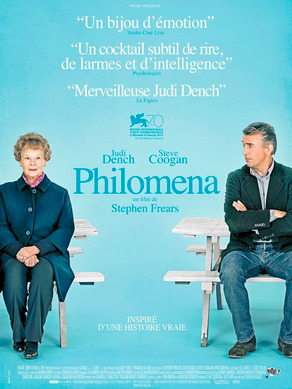
"Philomena" de Stephen Frears (2013) - adapté de l'histoire vraie de Philomena Lee et de son fils Michael A. Hess rapportée par le journaliste britannique Martin Sixsmith dans son livre "The Lost Child of Philomena" (2009) - avec Judi Dench, Steve Coogan, Sophie Kennedy Clark, Michelle Fairley, Anna Maxwell Martin, Mare Winningham, Peter Hermann et Sean Mahon, février 2024.
#films#Biopic#spirit#hommage#Frears#Lee#Hess#Sixsmith#Dench#Coogan#Clark#Fairley#MaxwellMartin#Winningham#Hermann#Mahon
2 notes
·
View notes
Text
"Life is 10% what happens to us and 90% how we react to it." Charles R. Swindoll
"Do not expect the world to look bright, if you habitually wear grey-brown glasses." Tomas Eliot
"Is there anything I can do to make myself Enlightened?" "As little as you can do to make the sun rise in the morning." "Then of what use are the spiritual exercises you prescribe?" "To make sure you are not asleep when the sun begins to rise." Anthony De Mello
"It is not only for what we do that we are held responsible, but also for what we do not do." Moliere
"The greatest thing in the world is to know how to belong to oneself." Michel de Montaigne
"They must often change, who would be constant in happiness or wisdom." Confucius
"What could I say to you that would be of value, except that perhaps you seek too much, that as a result of your seeking you cannot find." Hermann Hesse
"Fear twists our ideas and makes crooked the ways of our life; it creates barriers between people, and it certainly destroys love." Jiddu Krishnamurti
3 notes
·
View notes
Text
Birthdays 3.23
Beer Birthdays
Maximilian Schaefer (d. 1813)
Michael Brand (1826)
Stephen Sartori (1985)
Five Favorite Birthdays
Fannie Farmer; actress, writer (1857)
Erich Fromm; writer, psychoanalyst (1900)
Akira Kurosawa; film director (1910)
Keri Russell; actress (1976)
William Smith; English geologist (1769)
Famous Birthdays
Marty Allen; comedian (1922)
Roger Bannister; English runner, 1st 4-min. miler (1929)
John Bartram; botanist (1699)
Daniel Bovet; Swiss-Italian pharmacologist (1907)
Josef Čapek; Czech writer (1887)
Francesco Clemente; Italian painter & illustrator (1952)
Kenneth Cole; fashion designer (1954)
Joan Crawford; actress (1908)
Hope Davis; actress (1964)
Lorenzino de' Medici; Italian writer & assassin (1514)
Yasmeen Ghauri; model (1971)
Richard Grieco; actor (1965)
Juan Gris; artist (1887)
David Grisman; mandolin player and composer (1945)
Ron Jaworski; Philadelphia Eagles QB (1951)
Catherine Keener; actress (1959)
Jason Kidd; Dallas Mavericks G (1973)
William "Captain" Kidd; Scottish sailor, pirate (1645)
Jannis Kounellis; Greek painter and sculptor (1936)
Piere Simon Laplace; astronomer, mathematician (1749)
J. C. Leyendecker; German-American painter (1874)
Moses Malone; basketball C (1955)
Tony McPhee; English singer-songwriter (1944)
Michelle Monaghan; actress (1976)
Ric Ocasek; rock musician (1949)
John Payne; actor (1912)
Amanda Plummer; actress (1957)
Gail Porter; model, actress (1971)
Kim Stanley Robinson; writer (1952)
Frank Sargeson; New Zealand writer (1903)
Elizabeth Ann Scarborough; author (1947)
Thomas Selle; German composer (1599)
Hermann Staudinger; German chemist (1881)
Werner Von Braun; rocket scientist (1912)
Charles Werner; cartoonist (1909)
Gary Whitehead; poet and painter (1965)
1 note
·
View note
Text
Die „Andy Morgan Gesamtausgabe“, veröffentlicht vom Carlsen Verlag, vereint die Abenteuer des ehemaligen Interpol-Agenten Andy Morgan, der auf der Yacht Cormoran mit seinen Freunden die Welt bereist. Im Original unter dem Titel „Bernard Prince“ bekannt, wurde die Serie von Autor Greg (Michel Regnier) und Zeichner Hermann Huppen geschaffen – ein Duo, das die frankobelgische Comic-Tradition nachhaltig prägte. Die Geschichten verbinden exotische Schauplätze, spannende Konflikte und moralische Fragen. Neben Andy stehen sein Freund Barney Jordan und der junge Ali im Mittelpunkt, die gemeinsam Abenteuer voller Mut und Gerechtigkeit erleben. Gregs komplexe Erzählweise und Hermanns detailreicher, atmosphärischer Zeichenstil machen die Serie zu einem Meilenstein. Die hochwertige Hardcover-Ausgabe umfasst restaurierte Geschichten und bietet ergänzende redaktionelle Beiträge über die Entstehung der Serie und ihren kulturellen Kontext. Ein Muss für Fans und Neueinsteiger, die einen Klassiker des europäischen Comics entdecken möchten.
0 notes